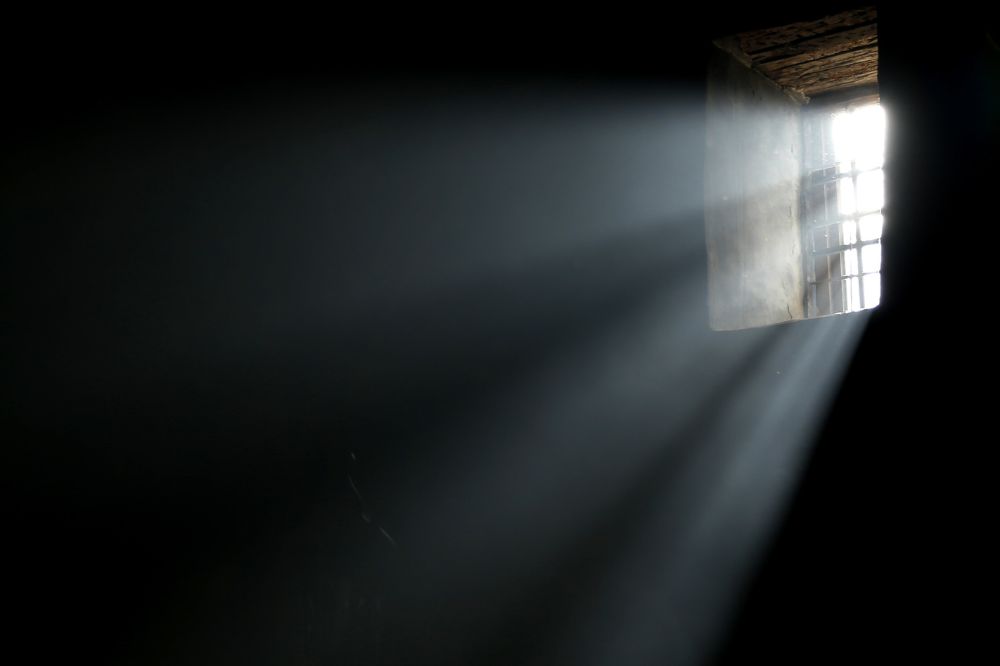In the strictest sense, white is the absence of color. You can’t mix any colors together to get white. Conversely, black is the sum of all colors—what you obtain by mixing all colors on the spectrum together. Now many of you know what I look like. Very light complexion. So much so that I’ve laughed through the 40+ years I’ve known my mother-in-law because, as often as not, the first thing she says when she sees me (usually to Wendy) is “Tim’s color wasn’t good!” Or to me directly, “Tim, are you okay? You look so pale!” For 20 years I responded simply, “No, I think I’m okay, really.” But for the past 20 years I usually just say, “Nana. Look at me. These are my people.” The colorless ones.
I’m not being entirely frivolous here. Polarities of colorless vs. colorful, white vs. black, and light vs. dark abound in our culture. Trouble is, dominant cultures always define what any simple realities mean. Even worse, dominant and oppressive cultures assign value to one or the other side of analogies and opposites. I knew by the time I was four that the cowboys in the white hats were the good guys, and those in the dark hats were the bad guys. That’s how we were taught to see things. Likewise skin tones. Light skin or clothing is fair or pure, like Snow White. Dark is evil. Think Maleficent or Darth Vader.
We are coming to realize as both culture and church that these stereotypes are not only not helpful, they are at their most insidious (even if subconsciously) purveyors of White privilege and supremacy. I can lecture until I’m blue in the face about the baptismal garment derivation of the liturgical alb—literally translated “white”—that resurged in the liturgical renewal of the 1960s. That it signifies purity and baptism from the (all-White) European church. It’s even biblical, as in the Transfiguration or in Revelation’s crowd dressed in white robes who have been through great tribulation and have been washed in the blood of the lamb. But white robes too often mean terror for people who don’t look like me.
And then there’s the season of the church year nearly upon us. Epiphany. Revealed. Made manifest. It juxtaposes light and darkness. “The people who walked in darkness have seen a great light.” Or even the star that the Magi follow to Jesus. But consider this. Light isn’t the only thing that reveals; in fact, too much light blinds. Stars, including the Bethlehem star, are not visible during the day. That is to say that night, or darkness, is what reveals them. It’s not “light good, dark bad.” It is light/darkness in tandem, as Genesis reminds us. “There was evening and there was morning, the first day.” Creation itself, like the seed in the dark earth, germinates in the darkness. A new life grows in the darkness of the womb.
The thing about light is that its reflection is what allows us to see any and all color. Including, of course, black, which again IS the sum of all color. As Steven Thorngate notes in The Christian Century (Dec. 2022, p. 58), “Many Christians would like to excise light/dark from our liturgical text—or at least exclude them from new ones—and for pretty persuasive reasons.” I commend his observations to you for pondering and discussing—his assertion that “Light/dark language is elemental. Can we embrace its richness while also seeking to avoid the harm it can do?” He offers six guidelines for consideration in using light/dark imagery and juxtaposition.
Like so many things as a White man in a dominant (White) culture, I am finding new struggle with Epiphany imagery and I resonate with Thorngate’s six considerations to help guide our processing of how we cause no harm through imagery to which the dominant culture assigns pejorative connotations. Not easy work, but necessary. I also commend to you the recent book God’s Holy Darkness by Sharei Green and Beckah Selnick. It’s appropriate for all ages, children to adults, to help us lift up the beauty and necessity of darkness as part of God’s good creation and rhythm of nature itself, night and day.
As a baby step this Epiphany, contemplate that as brilliant as the star that led the Magi to Jesus may have been, they never could have seen it except at night—holy light made visible by holy darkness that in contrast and interplay become a beautiful part of God’s glorious creation. At the very least, be aware and careful with language. Remind folks that white = no color, and black = all color. While both have power and purpose, the greatest beauty is the intricate interplay and contrast of the whole spectrum—both poles and everything in between.
Blessed Epiphany.
Walking with you,





